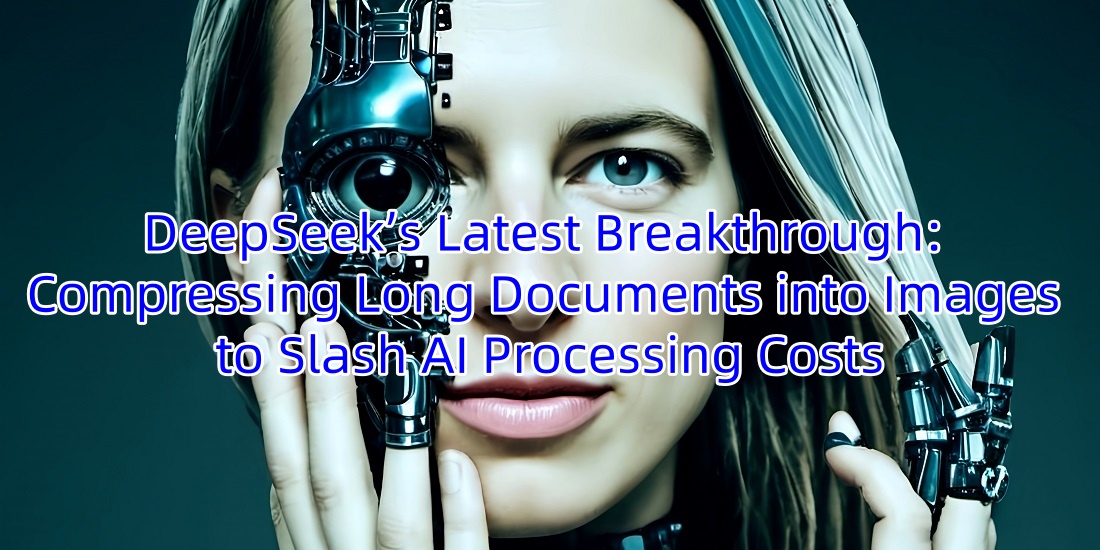
Introducing DeepSeek-OCR: A Revolutionary Approach to Document Processing
In a groundbreaking move, DeepSeek has unveiled its latest open-source innovation: DeepSeek-OCR. This cutting-edge model introduces a novel “contextual optical compression” method that could fundamentally transform how large language models handle lengthy documents, dramatically reducing computational costs and efficiency barriers.
The Long-Text Processing Challenge
Large language models face significant hurdles when processing documents spanning thousands or even millions of words. Computational demands skyrocket, memory requirements balloon, and processing costs become prohibitive. This bottleneck has severely limited AI applications in scenarios involving massive document repositories – until now.
The Human Vision Inspiration
DeepSeek’s team identified a fascinating parallel: human readers rely heavily on visual systems to rapidly capture and compress page layouts, paragraph structures, and spatial information. Could machines replicate this efficient process? DeepSeek-OCR represents DeepSeek’s pioneering exploration of this very question.
Beyond Traditional OCR: The Visual Preprocessor
The core innovation is strikingly elegant: instead of feeding raw text sequences directly to language models, DeepSeek-OCR first renders text content as images. Then, highly efficient vision models compress and understand these images, ultimately passing only the condensed visual features – far fewer in number – to the language model for “decompression” and processing.
This makes DeepSeek-OCR much more than a conventional OCR tool. It functions as a sophisticated “visual preprocessor” for large models, acting as a compression engine that efficiently packages thousands of text tokens into mere hundreds of visual tokens.
Architecture Excellence: The DeepSeek Advantage
DeepSeek-OCR’s architecture comprises two core components: the DeepEncoder and the DeepSeek-3B-MoE-A570M decoder (a mixture-of-experts model with 3 billion total parameters and 570 million activated parameters).
The DeepEncoder stands as the system’s masterpiece, designed to handle high-resolution input images while maintaining low activation memory and achieving extraordinary compression ratios. DeepSeek brilliantly integrated two proven vision model architectures: SAM (Segment Anything Model) and CLIP (Contrastive Language–Image Pre-training).
SAM’s window attention mechanism excels at processing local details, forming the encoder’s front end. CLIP’s dense global attention mechanism captures comprehensive contextual knowledge. A 16× downsampling convolutional compression module bridges these components, creating a “divide-and-conquer” design that effectively prevents memory overflow and token explosion in high-resolution image processing.
The decoder leverages DeepSeek’s proprietary Mixture-of-Experts (MoE) architecture. This approach distributes tasks across specialized expert networks, delivering exceptional capability while maintaining manageable scale. In DeepSeek-OCR, this 570-million-parameter decoder masterfully “decompresses” visual tokens back into accurate text sequences.
Proven Performance: Industry-Leading Results
DeepSeek validated this new paradigm across OCR benchmarks including Fox and OmniDocBench, testing whether the compression-decompression process reliably preserves information. In tests involving English documents containing 600-1,300 text tokens, DeepSeek-OCR successfully processed them using only 64 or 100 visual tokens.
The results are impressive:
-
Below 10× compression ratio: OCR decoding accuracy exceeds 97%
-
At 20× compression ratio: Accuracy maintains approximately 60%
In the more practical OmniDocBench evaluation, DeepSeek-OCR demonstrated outstanding performance. Compared to alternatives like GOT-OCR2.0 (averaging 256 tokens per page) and MinerU2.0 (exceeding 6,000 tokens per page), DeepSeek-OCR achieved state-of-the-art results while using significantly fewer visual tokens.
Beyond Text: Advanced Structural Understanding
DeepSeek-OCR’s capabilities extend far beyond traditional text recognition. Thanks to training data encompassing charts, chemical formulas, geometric diagrams, and diverse visual content, the model demonstrates remarkable “deep parsing” abilities:
-
Converting report charts into structured table data
-
Transforming chemical formulas into SMILES notation
-
Analyzing geometric relationships between line segments
-
Extracting meaningful structure from complex visual elements
These advanced capabilities open exciting applications across finance, scientific research, education, and specialized professional domains.
Open-Source Accessibility and Enterprise Performance
True to DeepSeek’s commitment to accessibility, the company has open-sourced DeepSeek-OCR’s core code and model weights. According to technical reports, in production environments, a single A100-40G GPU can process over 200,000 document pages daily – enterprise-grade performance at unprecedented efficiency.
Current Limitations and Future Vision
As an exploratory technology, DeepSeek-OCR has areas for improvement. Performance begins declining beyond 10× compression ratios, likely due to information loss in complex layouts or text detail degradation in low-resolution images. Handling extremely complex document layouts remains challenging.
Furthermore, while OCR provides clear compression-decompression mapping, document understanding differs fundamentally from multi-turn dialogue comprehension. The latter involves reasoning, memory retrieval, and contextual relationships beyond mere perception and decoding.
DeepSeek acknowledges these challenges and plans future experiments with digital-optical text interleaving and long-context retrieval accuracy assessments – particularly “needle-in-a-haystack” tests to verify early information retention in optically compressed dialogue histories.
The Future of AI Processing: A New Paradigm
Despite these challenges, DeepSeek-OCR represents tremendously significant work. Beyond being an exceptional OCR tool, it pioneers new pathways for deep visual-linguistic integration. Traditionally treated as separate input modalities, DeepSeek-OCR demonstrates that vision and language can serve as mutual information compression and decompression mediums.
This breakthrough paradigm suggests fascinating future applications:
-
Dynamically rendering multi-turn conversation histories as images for cheaper long-context management
-
Compressing massive knowledge bases into compact visual indexes for enhanced retrieval efficiency
-
Revolutionizing how AI systems handle, store, and process extensive information
DeepSeek continues to push AI boundaries, and with DeepSeek-OCR, they’ve opened an exciting new chapter in efficient, intelligent document processing that could reshape how we interact with large-scale information in the AI era.
